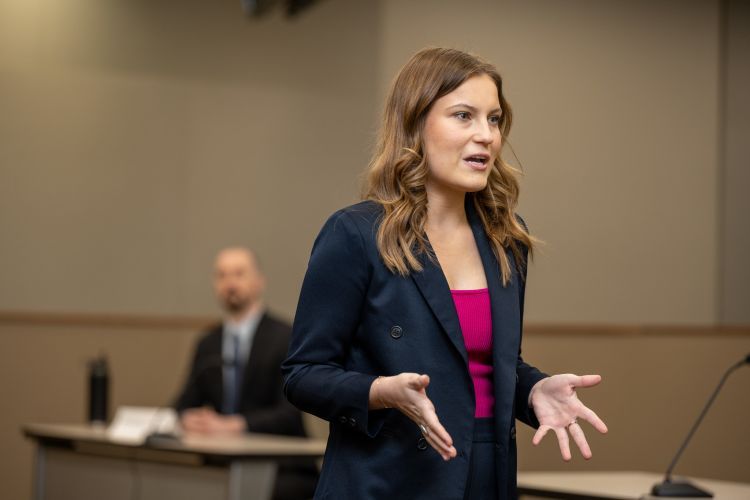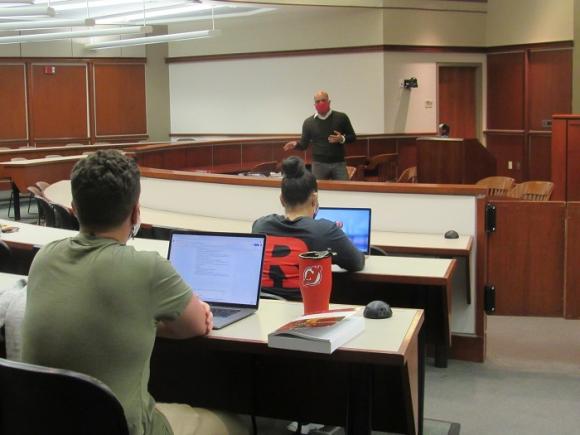Necessary Abilities for Crafting Convincing Trial Presentations: A Comprehensive Guide
Necessary Abilities for Crafting Convincing Trial Presentations: A Comprehensive Guide
Blog Article
Navigating the Complexities of Test Presentations: Tips for Seamless Delivery and Engaging Arguments
In the world of lawful process, the art of test presentation stands as an important factor of success. The complexities intrinsic in test presentations need a fragile equilibrium of finesse, skill, and technique.

Understanding Trial Purposes
To successfully browse a test, it is essential to have a clear understanding of the objectives that require to be attained. Before tipping right into the courtroom, legal groups must define their objectives and desired end results. These purposes act as leading concepts throughout the test, forming techniques and affecting decision-making procedures.
Recognizing trial objectives includes an extensive evaluation of the situation, lawful criteria, and the customer's benefits. Trial Presentations. It calls for a precise examination of the facts, determining key issues, and expecting possible challenges. By establishing measurable and certain goals, lawyers can tailor their presentations and arguments to straighten with the preferred results
Additionally, a clear understanding of trial purposes enables lawful groups to prioritize evidence, witnesses, and lawful arguments properly. It permits for the advancement of a meaningful story that resonates with the discretionary, enhancing the overall situation presentation.

Organizing Proof Efficiently
Having a clear understanding of trial purposes lays the structure for arranging evidence successfully in legal procedures - Trial Presentations. By lining up the discussion of evidence with the preferred outcomes of the trial, lawful groups can strengthen their debates and enhance their persuasiveness. One critical facet of organizing evidence is classification. Grouping proof based upon styles or significance to specific legal components can help streamline the discussion and make complicated info more absorbable for the judge or court.
Another secret element in organizing evidence efficiently is developing a logical circulation. Providing evidence in a sequential and systematic manner can assist build a compelling narrative that supports the legal debates being made. Additionally, making use of visual aids such as graphs, timelines, or graphes can further enhance the organization of evidence and assist in making clear intricate relationships or series of events.
In addition, guaranteeing that all proof offered is admissible and relevant to the instance is vital. Unnecessary or inadmissible proof can interfere with the stamina of the argument and possibly hurt the credibility of today event. As a result, a meticulous review and selection procedure ought to be taken on to consist of only the most legitimately sound and impactful evidence in the test discussion.
Crafting Convincing Stories
Crafting compelling stories plays an essential function in presenting influential debates throughout legal process. When constructing a story for a trial helpful site presentation, it is vital to develop a clear story that highlights vital points and links them in a systematic fashion. By weaving with each other proof, testimony, and legal arguments into a cohesive and persuasive narrative, lawful specialists can properly advocate for their customers and increase the chance of a favorable outcome in the courtroom.
Grasping Visual Help
Effective use visual help is crucial to improving the effect and clarity of trial presentations. Visual help, when utilized strategically, have the power to simplify complicated information, reinforce bottom lines, and leave a long lasting perception on the judge and court. To master visual help in trial discussions, it is essential to guarantee that they are clear, succinct, and pertinent to the disagreements being made.
When incorporating visual aids, such as charts, pictures, graphs, or timelines, right into a test discussion, it is necessary to maintain them visually appealing yet specialist. The visuals must complement the verbal debates, offering a graph of the details being discussed without overwhelming the audience with unnecessary details.
Additionally, practicing with the web aesthetic aids ahead of time is crucial to guarantee a seamless shipment throughout the test. Acquainting oneself with the content, shifts, and timings of each aesthetic help can help keep the flow of the presentation anchor and prevent technological problems that may arise.
Delivering Impactful Closing Debates
An engaging closing argument offers as the end result of a trial discussion, encapsulating the core narrative and encouraging the court and court in the direction of a favorable decision. To provide an impactful closing argument, it is vital to succinctly recap vital points, highlight the toughness of your situation, and address any weaknesses in a strategic manner. Begin by describing the main debates that support your customer's position, highlighting why the proof presented throughout the test sustains your story. It is important to create a sense of communication and clarity, leading the court and jury in the direction of the wanted conclusion.
Moreover, integrating psychological appeal can even more enhance your closing debate. By connecting and humanizing the case on a personal degree with the decision-makers, you can evoke empathy and understanding, affecting their perception of the facts presented. In addition, stating the lawful standards that should be satisfied for a favorable ruling can reinforce the legitimacy of your setting. Ultimately, a well-crafted closing disagreement must leave a lasting impression, engaging the discretionary to rule in your client's support.
Verdict
In conclusion, grasping trial discussions involves understanding goals, arranging evidence, crafting narratives, using aesthetic help, and providing impactful closing disagreements. By executing these strategies properly, lawyers can provide their case perfectly and make compelling disagreements in the court room. It is critical to browse the intricacies of trial discussions with precision and skill to achieve success in lawful process.
By aligning the presentation of proof with the wanted end results of the trial, lawful teams can reinforce their disagreements and boost their persuasiveness (Trial Presentations). To grasp visual help in trial presentations, it is vital to make sure that they are clear, succinct, and pertinent to the disagreements being made
An engaging closing disagreement offers as the end result of a trial discussion, enveloping the core story and encouraging the court and court towards a desirable decision. Begin by laying out the primary debates that support your client's setting, stressing why the evidence provided throughout the test supports your narrative.In verdict, mastering test presentations entails understanding purposes, organizing evidence, crafting narratives, utilizing aesthetic help, and delivering impactful closing debates.
Report this page